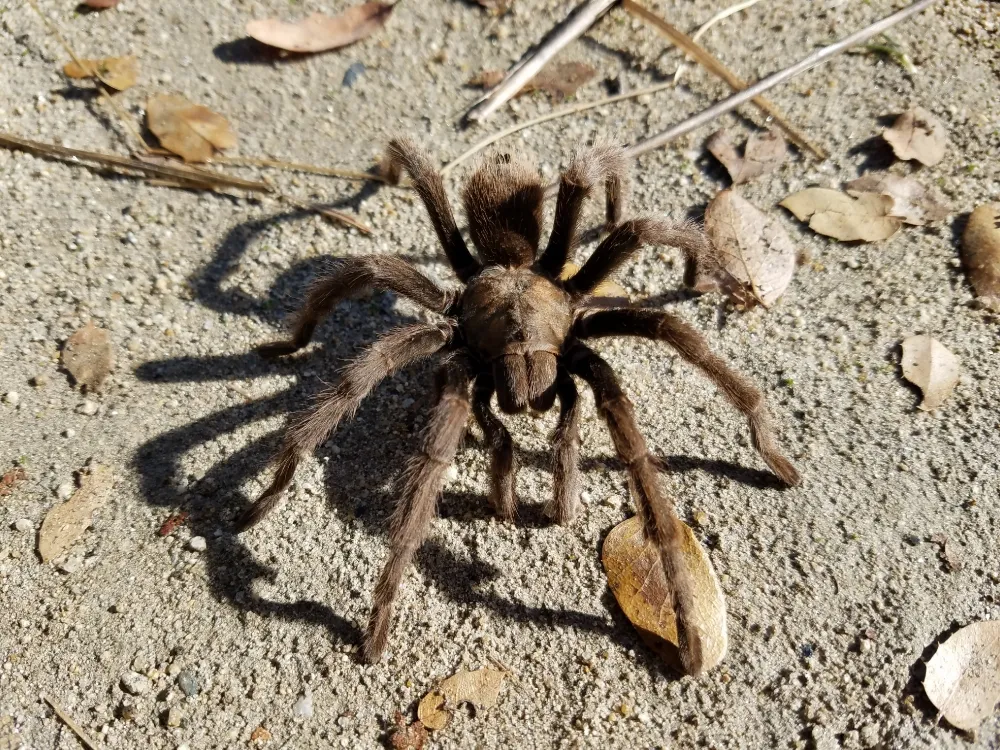What is a Brown Tarantula Spider
The brown tarantula, a fascinating member of the Theraphosidae family, is a large, hairy spider known for its impressive size and distinctive appearance. These spiders are native to various regions, primarily in North America, and have captured the attention of both scientists and enthusiasts alike. Their imposing presence and unique characteristics make them a captivating subject of study and observation. The brown tarantula is not just any spider; it represents a specific group of arachnids with intriguing behaviors and ecological roles. Understanding what defines a brown tarantula is the first step in appreciating its complexities.
Appearance and Characteristics
Brown tarantulas are easily recognizable due to their robust build and the dense covering of hairs that give them a furry appearance. The coloration can vary, but they typically exhibit shades of brown, ranging from light tan to dark chocolate, which provides effective camouflage in their natural habitats. Their bodies are divided into two main parts: the cephalothorax (fused head and thorax) and the abdomen. The cephalothorax houses the eyes, mouthparts, and legs, while the abdomen contains the digestive and reproductive organs. Their large size is another striking characteristic, with some species having a leg span that can exceed six inches. These physical attributes make the brown tarantula a formidable presence in its environment.
Identifying Features
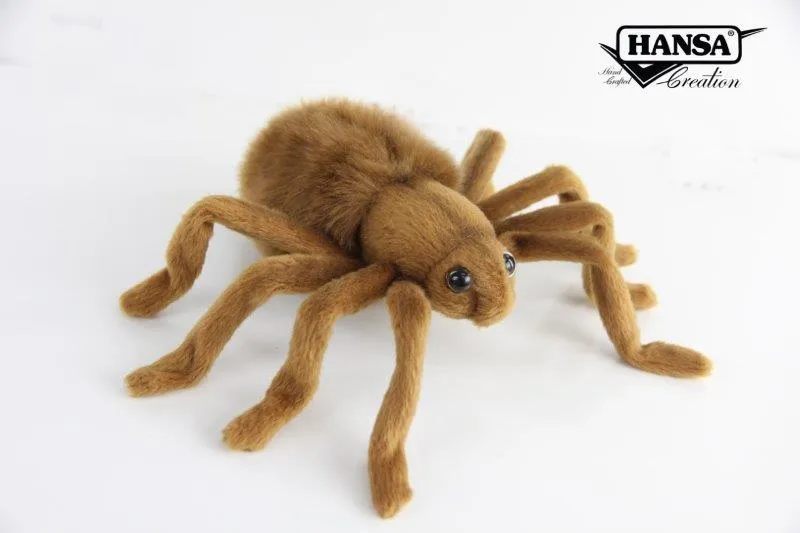
Identifying a brown tarantula involves looking closely at its features. Key identifiers include the presence of eight legs, two chelicerae (fangs), and multiple eyes. The arrangement of the eyes and the pattern of hairs on the legs and body can also help in species identification. In addition to the physical features, observing the tarantula’s behavior can aid in identification. For example, the way it moves, its stance, and its reaction to potential threats are all important clues. Examining these features carefully can help distinguish a brown tarantula from other spiders and understand its specific traits.
Size and Lifespan
The size of a brown tarantula varies depending on the species, but generally, they are large spiders. The leg span is a key measurement, and it can range from four to seven inches or more. Female brown tarantulas typically live longer than males. The lifespan of females can extend from 10 to 25 years or even longer in some cases, while males usually live for only a few years after reaching maturity. Factors such as diet, environmental conditions, and genetics also play a role in their longevity. Understanding their size and lifespan helps in appreciating their life cycle and care requirements.
Habitat and Distribution
Brown tarantulas are found in a variety of habitats, with their distribution largely influenced by climate and food availability. They prefer warm, dry environments, such as grasslands, deserts, and scrublands. Their ability to adapt to different conditions allows them to thrive in diverse ecosystems, including burrows and under rocks. The specific habitat can vary based on the species, but they all share a need for shelter and access to prey. Knowing where brown tarantulas live helps in understanding their behaviors and their importance within their ecological roles.
Natural Environment

The natural environment of a brown tarantula is crucial for its survival. They often live in burrows, which they either create themselves or find in the wild. These burrows provide shelter from the elements and a safe place to ambush prey. The surrounding environment, including the vegetation, soil type, and availability of water, all affect the tarantula’s ability to thrive. The presence of other animals, like insects and small vertebrates, also impacts their daily lives. They are adaptable and thrive in environments that provide the resources needed for survival.
Geographic Range
The geographic range of brown tarantulas is primarily in North America, with some species extending into Central and South America. Within North America, they can be found in the southwestern United States, including states like Arizona, California, and New Mexico. Their distribution is determined by factors such as climate, vegetation, and the presence of suitable prey. Understanding their geographical distribution is important for conservation efforts and for predicting where they may be found. Their range is often linked to the specific environmental conditions they require to survive and thrive.
Behavior and Habits
Brown tarantulas exhibit a range of behaviors that help them survive in their environments. They are typically nocturnal hunters, meaning they are most active at night. Their hunting strategies include waiting for prey to come near their burrows and then ambushing them. They are also known for their defensive behaviors, such as flicking urticating hairs as a deterrent to potential threats. Their habits and behaviors are essential for their survival and are fascinating to observe. Their daily routines and adaptations show how these spiders interact with their surroundings.
Diet and Feeding
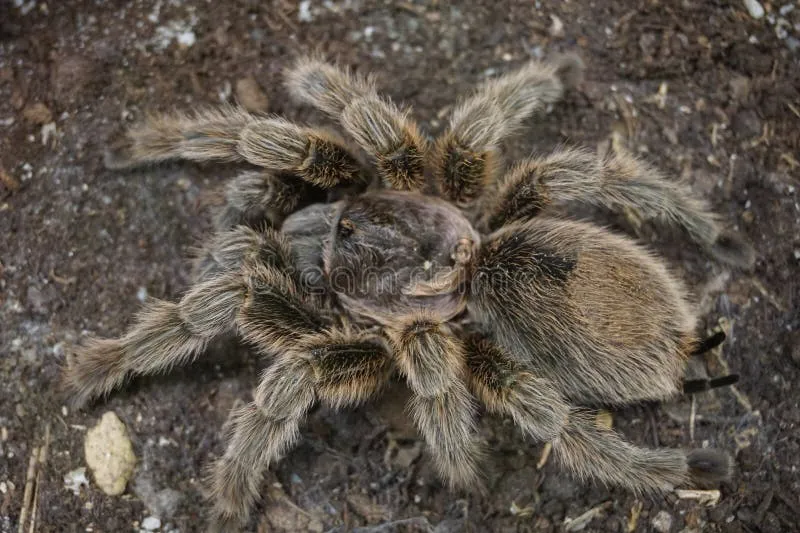
The diet of a brown tarantula primarily consists of insects, but they are opportunistic feeders and will consume other prey as well. Their diet includes crickets, grasshoppers, beetles, and sometimes even small vertebrates like lizards or mice. They use their fangs to inject venom, which immobilizes their prey and begins the digestive process. The tarantula then consumes the prey, absorbing the nutrients needed for growth and survival. The availability of different types of prey plays a vital role in their feeding habits and overall health.
Hunting Strategies
Brown tarantulas have developed effective hunting strategies to secure their meals. They often ambush their prey, waiting patiently near their burrows or in concealed locations. They have sensory hairs that detect vibrations in the environment, alerting them to the presence of potential prey. Once prey comes close enough, the tarantula quickly attacks, using its fangs to inject venom. Some species actively stalk their prey. These varied hunting methods reflect the adaptability of brown tarantulas. Their ability to efficiently capture food is crucial for their survival.
Defense Mechanisms
Brown tarantulas have several defense mechanisms to protect themselves from predators. One common defense is the flicking of urticating hairs, which are irritating to potential threats. These hairs, located on the abdomen, can cause skin irritation and discomfort, deterring predators from attacking. Additionally, tarantulas can bite if they feel threatened, injecting venom that can cause pain and other reactions. Their large size and imposing appearance also serve as a deterrent. The brown tarantula’s defensive strategies are critical for its survival in the wild.
Conservation Status and Threats
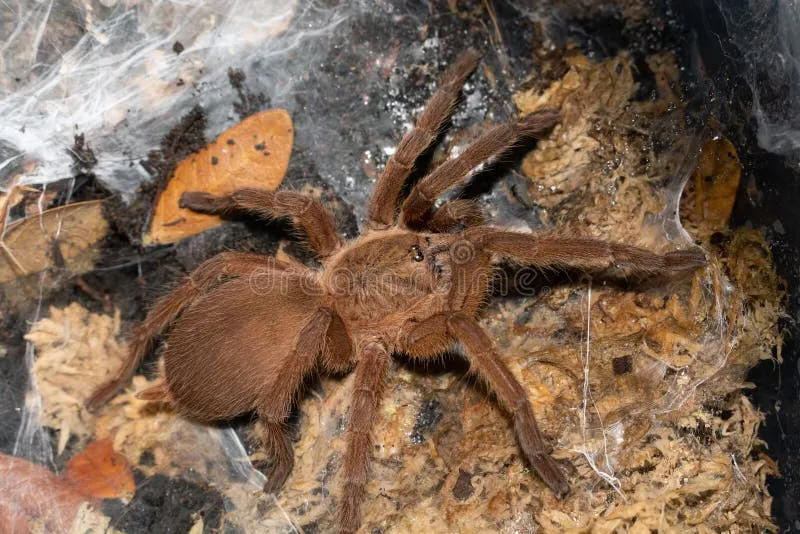
The conservation status of brown tarantulas varies depending on the species and location. Some species are relatively common, while others face threats that could impact their populations. Habitat loss due to urbanization and agricultural expansion is a significant challenge. The pet trade and collecting can also pose risks if not managed properly. Climate change and other environmental factors can further impact their survival. Understanding the conservation status of brown tarantulas is critical for implementing measures to protect these fascinating creatures.
Common Predators
Brown tarantulas have several predators in their natural habitats. Larger animals such as birds of prey, coyotes, and other mammals may prey on them. Certain species of wasps and other spiders are also threats. Juveniles are especially vulnerable, but adults may also be preyed upon, especially during molting when their exoskeletons are soft. The presence of predators influences the behaviors and survival strategies of brown tarantulas. Avoiding predators is essential for their longevity.
Conservation Efforts
Conservation efforts for brown tarantulas focus on protecting their habitats, managing the pet trade, and raising public awareness. Habitat preservation involves the protection of natural environments and the reduction of habitat loss. Sustainable practices in the pet trade are essential to ensure the populations aren’t harmed. Educational programs and public outreach can raise awareness about the importance of these spiders and their role in the ecosystem. Collaborative efforts between scientists, conservationists, and the public are vital for the long-term survival of brown tarantulas.
Interesting Facts about Brown Tarantulas
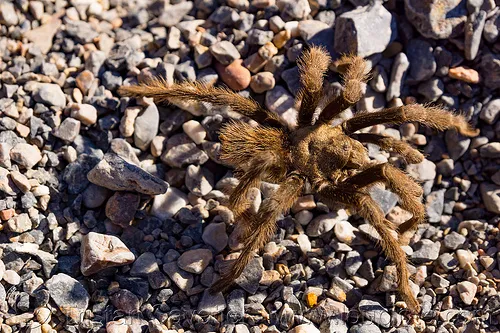
Brown tarantulas have several interesting characteristics that make them fascinating subjects of study. They are capable of molting, a process where they shed their exoskeleton to grow. During molting, they are very vulnerable. They also have the ability to regenerate lost limbs. The females are known to live much longer than males, sometimes for decades. Their complex behaviors, adaptations, and unique abilities contribute to their appeal and make them a captivating subject for naturalists and enthusiasts.
Unique Abilities
Brown tarantulas possess unique abilities that help them survive in their environment. They can climb vertical surfaces using tiny claws and hairs on their feet. They have highly developed sensory systems, allowing them to detect vibrations and movements. Their venom, while not typically lethal to humans, is used to immobilize prey. They have remarkable adaptations. These unique abilities demonstrate the evolutionary success of brown tarantulas.
Interaction with Humans
The interaction between brown tarantulas and humans can vary. In many cases, they are viewed with a mixture of fear and fascination. They are popular pets, and their care can be demanding, requiring a specific environment and feeding routine. While they are not generally aggressive, bites can occur if they feel threatened. Education about their behaviors and habitats can help in reducing misconceptions. Learning about the brown tarantulas promotes appreciation of their value in nature.
